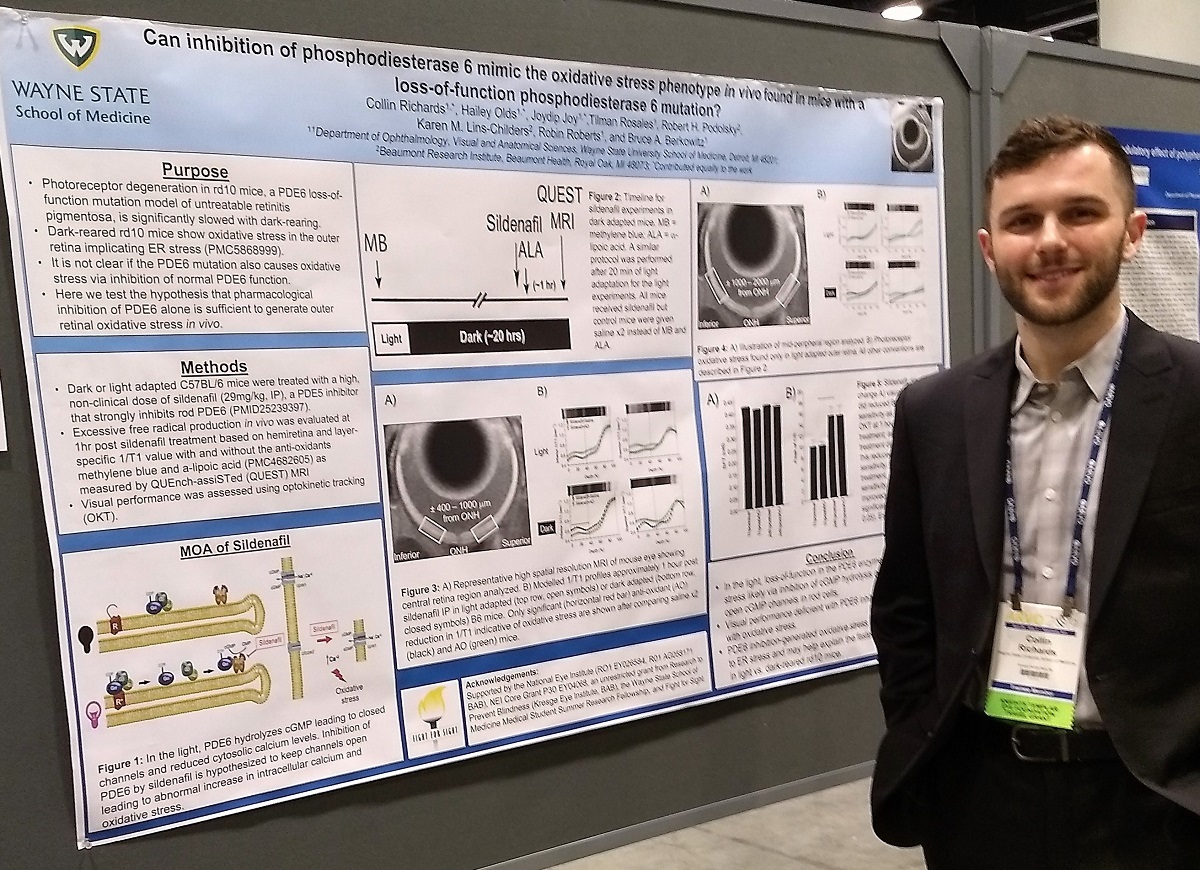Wayne State University School of Medicine student Collin Richards has enjoyed a ripple of success since winning the 2018 Fight for Sight Summer Student Fellowship that led to a research project utilizing in vivo magnetic resonance imaging to evaluate the role oxidative stress plays in the pathogenesis of retinal disease.

He later received the Knights Templar Eye Foundation Travel Grant to present the project at the 2019 Association for Research in Vision and Ophthalmology Conference, held April 28-May 2 in Vancouver. There, he won the Members in Training Outstanding Poster Award in the Physiology/Pharmacology category.
He completed the project in the lab of Professor of Ophthalmology, Vision and Anatomical Sciences Bruce Berkowitz, Ph.D.
“I feel honored and grateful to receive this award on behalf of our group. This was a direct result of the spectacular mentorship and culture present at Wayne State School of Medicine. I am appreciative of the guidance Dr. Berkowitz and his lab have provided, and the hard work of my peers, Joydip Joy Hailey Olds and Tilman Rosales, who deserve equal credit for this work,” Richards said.
The poster, “Can inhibition of phosphodiesterase 6 mimic the oxidative stress phenotype in vivo found in mice with a loss-of-function phosphodiesterase 6 mutation?,” initially scored in the top five for the section.
“I participated in another presentation that was evaluated by a panel of judges, with our work being selected to receive the award,” he added.
Retinitis pigmentosa is an incurable blinding disorder, and the animal model (rd10 mouse) has a loss of function mutation in an enzyme localized to the photoreceptors of the retina. The mice show evidence of oxidative stress in the photoreceptors and subsequently suffer rapid visual decline.
“Our group pharmacologically inhibited this enzyme in healthy mice and found evidence of oxidative stress in the photoreceptor layer. We measured oxidative stress in vivo utilizing QUEST MRI, a novel technique developed by the Berkowitz lab. Our work suggests that a loss of function in this enzyme is sufficient to generate oxidative stress and we can measure this oxidative stress via MRI in a living animal,” Richards said. “Our data indicate that there are additional modalities by which accelerated retinal degeneration may occur in light-adapted animals versus dark-adapted animals. This, among other work from Dr. Berkowitz's lab, provides a basis for the future of utilizing MRI to study the role oxidative stress plays in a variety of retinal and neurodegenerative disorders.”
Richards is vice president of the Class of 2021.